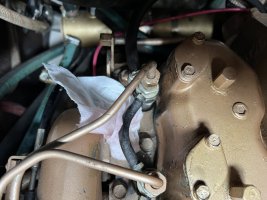I have a 1986 Ericson 32-3 with Universal M25. The fuel return lines were in really bad shape and she was leaking fuel from them. I replaced them but haven't tested it yet. I'm wondering if it is necessary to bleed the fuel system after changing just the fuel return lines? Please advise.
Fuel return line replacement
- Thread starter Bumbugo13
- Start date

